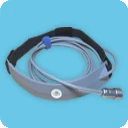Definition of biofeedback
In the etymology of biofeedback, we find "bio" from "biology", which refers to the scientific aspect of living organisms, and "feedback" which means "return". Biofeedback refers to body and emotional analysis techniques based on science. Behind this concept lies the interpretation of physiological signals by specific scanners.
The term biofeedback originated in the USA in the 60s and 70s. Its first use was for alpha-wave biofeedback (brain rhythm).
Subsequently, other types of signals were measured, such as heart rate with the electrocardiogram (ECG), muscle tension with the electromyogram (EMG), skin conductivity with the electrodermal, and electromagnetic frequencies with bioresonance.

Biofeedback and bioresonance
In bioresonance, biofeedback is achieved using electromagnetic frequencies that scanners such as the LIFE-System and QuantaScan Pro are able to analyze and interpret.
There are two types of information-carrying signals, generally of low frequency:
- The individual's own signals are remodeled by an electromagnetic system (endogenous bioresonance).
- Signals from a frequency generator (exogenous bioresonance).
How does a biofeedback session work?
For a bioresonance biofeedback session, the first session is crucial, as the professional carries out a preliminary assessment to determine the client's psychological state and therapeutic objectives.
Next, the professional places a harness around the client's head, so that the device can connect and communicate with the person.
Then, based on the scan, the professional performs an analysis of the whole body to detect potential dysfunctions and imbalances.
Once the analysis has been carried out, the professional proceeds to rebalance the tissues and organs in question. To do this, it sends information from the device, i.e., the scanner emits "corrective" frequencies that resonate with the body's cells, in order to restore the state of well-being.
On average, the first session lasts 1 hour 30 minutes, with further sessions lasting around 1 hour, depending on the wellness practitioner, customer profile, etc.
How do I choose a biofeedback practitioner?
In the United States, biofeedback has been regulated since 1981. The Biofeedback Certification Institute of America (BCIA) has established a set of standards to which professionals must adhere. The organization also provides training for people wishing to become professional in the field.
In France, it's quite different. The practice of biofeedback is less well known and regulated. However, at Quantaform International (official distributor and trainer of the LIFE-System and QuantaScan Pro), we are very selective among those wishing to become a bioresonance professional. Indeed, it's vital for us that the people we train are in line with our values and the ethical charter we've drawn up.
To help you quickly find a bioresonance and biofeedback professional near you, we've created a map.
Bioresonance biofeedback devices
There are several devices on the market, although we recommend the LIFE-System and QuantaScan Pro for their reliability and the results obtained.
Focus on the LIFE-System
LIFE-System performs biofeedback tests using 36 programs and 8,000 parameters. It provides a comprehensive test result enabling wellness therapists to monitor even the smallest factors that can disrupt bio-communication between systems.
Visit LIFE-System has been awarded C2 A certification by the TUV testing organization, which carried out double-blind clinical tests for osteoarthritis of the knees and hips.












